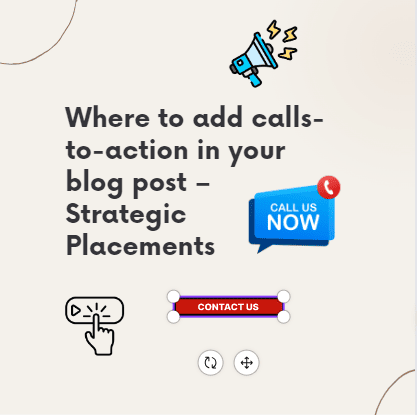Blog Content Structure for Maximum Engagement: A Powerful Framework
Introduction
Hit the ground running. Blogs are useless if no one reads them.
Your audience? Overworked, overstressed, skim-readers. They have zero patience for walls of text.
This post? A lifeline. A guide to better blog content structure for better engagement.
What bugs readers about bad blog content structure?
- I can’t find the damn point
- Reading feels like swimming through molasses
- Zero visual guides to follow along
- Nothing but dense, jargon-stuffed paragraphs
You’ll walk away with:
- A bulletproof system to make posts skimmable
- Tactics real bloggers use to boost engagement
- Visuals and examples galore to illustrate every tip
Storytime:
My first blogs were cringe-worthy disasters. There was no flow, zero scannability, just walls of rambling text. People bounced faster than a superball. I learned my lesson the hard way. Now, I’ll share the exact framework that turned things around.
There is no fluff, no smoke and mirrors. Just raw, road-tested tactics to captivate readers from the introduction to the conclusion.
By reading this guide, you’ll walk away with the ability to:
- Structure your blog content using a powerful framework that maximizes readability and engagement
- Utilize headings, paragraphs, visuals, calls-to-action, and storytelling elements like a pro blogger
- Keep readers hooked from the intro through to the conclusion and beyond
- Make your content more appealing and skimmable with real examples and visuals
- Optimize your blog formatting for better SEO and discoverability in search engines
- Master structuring techniques that top bloggers use to captivate their audiences
The Power of Headings and Subheadings in a Blog Content Structure
Ever feel lost in a blog post? Like you’re stumbling through a dense forest with no trail to follow? Good headings are your map.
They lay out the path to follow – signposts to guide you from point A to B. Search engines love well-structured headings, too. They indicate what a page is all about.
Effective heading types:
- Questions your audience is asking
- Benefit-driven statements
- Specific examples
People scan before they dive in. Compelling headings reel them in. Use headings strategically and watch engagement soar.
Pro Tip:
Mix up your heading styles to keep things visually engaging. For example, use questions in some sections and statements in others. Visuals make a considerable impact. Include screenshots or short gifs to illustrate key points. For example, “Video Heading Optimization Checklist.gif”
Let readers drive the discussion. Ask questions and prompt them to share their thoughts. Comments build community and SEO value.
Fresh content equals higher rankings. Update posts at least 2-3 times per year. Google craves the smell of freshly baked content.
Cut the jargon when you can. Nix phrases like “content ecosystem.” Talk like you’re chatting with a real human.
Paragraphs and Sentence Formats in a Blog Content Structure
Let’s talk paragraphs and sentences. Too many bloggers cram everything into dense, eye-glazing blobs of text. Break it up into bite-sized chunks. Short paragraphs allow people to skim and digest info rapidly. Three crisp sentences per paragraph is a good rule of thumb.
Use online tools like Hemingway or Grammarly. They analyze readability and grade level to ensure clarity. Why does sentence format matter in a blog content structure? Varying lengths create a natural rhythm that hooks readers in. Too many long, complex sentences? It’s mental overload.

Chop those monsters down. Aim for short, punchy statements. But mix in longer sentences here and there, too. An easy trick is to read your draft aloud. Awkward phrasing leaps out instantly, so rework anything that doesn’t flow smoothly.
Do you need examples of effective paragraphing? Let’s brew a fresh pot of coffee and dive in. Breaking things down with clear paragraph breaks catches the eye.
Personal stories zing your content with life. At that time, I agonized for hours over an intro paragraph. When I reread it while walking the dog? Woof, it stank!
Details, specifics, real-life cases – that’s what sells. None of this generic “strategies to boost blogging results” word salad. People connect with the raw, real-deal content.
Visuals to Enhance Engagement in your Blog content structure
Visuals are content candy. They hook eyeballs and break up big walls of text. A solid blend of words and imagery is key.
Include photos, videos, graphics – whatever format fits. Something visual every few paragraphs keeps things fresh. Place them near related points to illustrate concepts. Don’t ignore visuals SEO. Add keyword-rich alt text and file names. Make sure visuals are enhanced and aren’t just fluff.
Are you stuck for visual ideas? Try showing draft versions with revisions. Or screengrabs highlighting key steps. Even memes can punch things up.
Is part of your process complex? Break it into a step-by-step infographic. Readers love those skimmable visual guides for tricky topics.
Videos can be huge engagement boosters. Record quick clips explaining tough points. Or walk through examples live on camera.
Visuals cement abstract ideas, too. A concept clicking but needs a stronger anchor? Find or create a graphic to drive it home.
Mix formats to grab attention: charts one minute, photos the next, and maybe animated GIFs here and there. Variety is the visuals’ spice of life.
Calls To Action (CTAs)
Let’s talk about calls to action (CTAs). These prompts guide readers on what to do next. Solid CTAs keep people engaged way beyond that first click. This ensures that your content is unique and always engages the reader and directs them on what to do next.
Invite them to subscribe to your email list. “Join 14,762 other savvy marketers – drop your email below.” Give incentives like exclusive tips.
Spark discussions with open-ended questions. “What’s worked best for driving traffic to your site? Are there any tactics to avoid? Share in the comments!”
Keep ’em moving through your content. Simple CTAs like “Redeem Offer here” or “Check out this case study for more examples.”

Look for natural transition points to drop CTAs, like between sections or after making a key point. Don’t overdo it—sprinkle a few strategic ones.
Be creative! Include lighthearted CTAs, too. “Give this a share if you’d rather delete that cringe-worthy first blog post forever.” Humour makes it stick.
Switch up CTA formats. Plain text, buttons, links, banners. Visuals catch wandering eyes and prompt action.
The end goal? Converting one-time visitors into fans. Powerful CTAs keep them coming back for more. These are simple but often overlooked gold mines.
The Power of Storytelling in creating the best content structure

No one wants a dry lecture. Storytelling brings your content alive and keeps people hooked.
Lay out a narrative arc early on: the problem, your solution, and the payoff. “Are you Struggling with low traffic? I boosted mine 63% with these 5 tweaks.”
Stories help abstract tips click. Explaining YouTube SEO? Draw comparisons to popularity contests in high school. People grasp tough stuff faster with analogies.
Don’t be afraid to use casual, conversational language. “My old titles were some real click-bait trash, yo. Here’s how I fixed that mess.” People dig relatability.
Share wins and fails transparently. Both entertain and provide cautionary tales. Humble pie builds know-like trust faster than pompous preaching.
Have fun, experiment, and find your narrative voice. Content packed with personality resonates hardest. Bland gets ignored and forgotten lickety-split.
Engage the Reader Beyond the Blog Post
Let’s talk beyond that single blog post. Where do readers go from here?
Link to relevant past posts in your new content. “Need a refresher on SEO title tags? Check out this guide.” Connects knowledge to the web.
But don’t just link within your site. Relevant external resources add value, too. Have a title like: “This sums up the process better than I could.”
After laying out steps, solutions, and examples…what next? Prompt action with clear CTAs like: “Ready to implement these traffic techniques? Subscribe for the full guide.”
Ask people to comment on their own experiences. “Share your #1 blog formatting tip for engagement in the comments!” Two-way dialogue builds loyalty.
Push people to share content on social media. “Help a friend uplevel their blog by sharing this on Twitter/Facebook.” This maximizes your reach.
Is old content steadily losing steam? Update it, repackage it, or repurpose it. Title example. Don’t let people consume one piece then bounce. Guide their journey through your blog funnel. Stay in lockstep to remain invaluable.
Conclusion
Structuring your blog content is a game-changer for reader engagement and SEO performance. Scannable formatting with compelling headings, visuals, and narrative elements transforms dense text into captivating content. Thoughtful calls to action guide readers seamlessly along their journey.
Apply this framework to refresh an old, under-performing blog post or structure your next piece of content from the ground up. Follow the specific tips on paragraphs, sentences, visuals, CTAs, and storytelling to elevate your blog instantly.
Promise Continued Value: we’ll dive deeper into SEO optimization for your newly restructured content. From tactical on-page elements to link-building strategies, future posts will cover techniques to boost discoverability and organic traffic. Stay tuned for a complete content marketing system that delivers readers and results.







